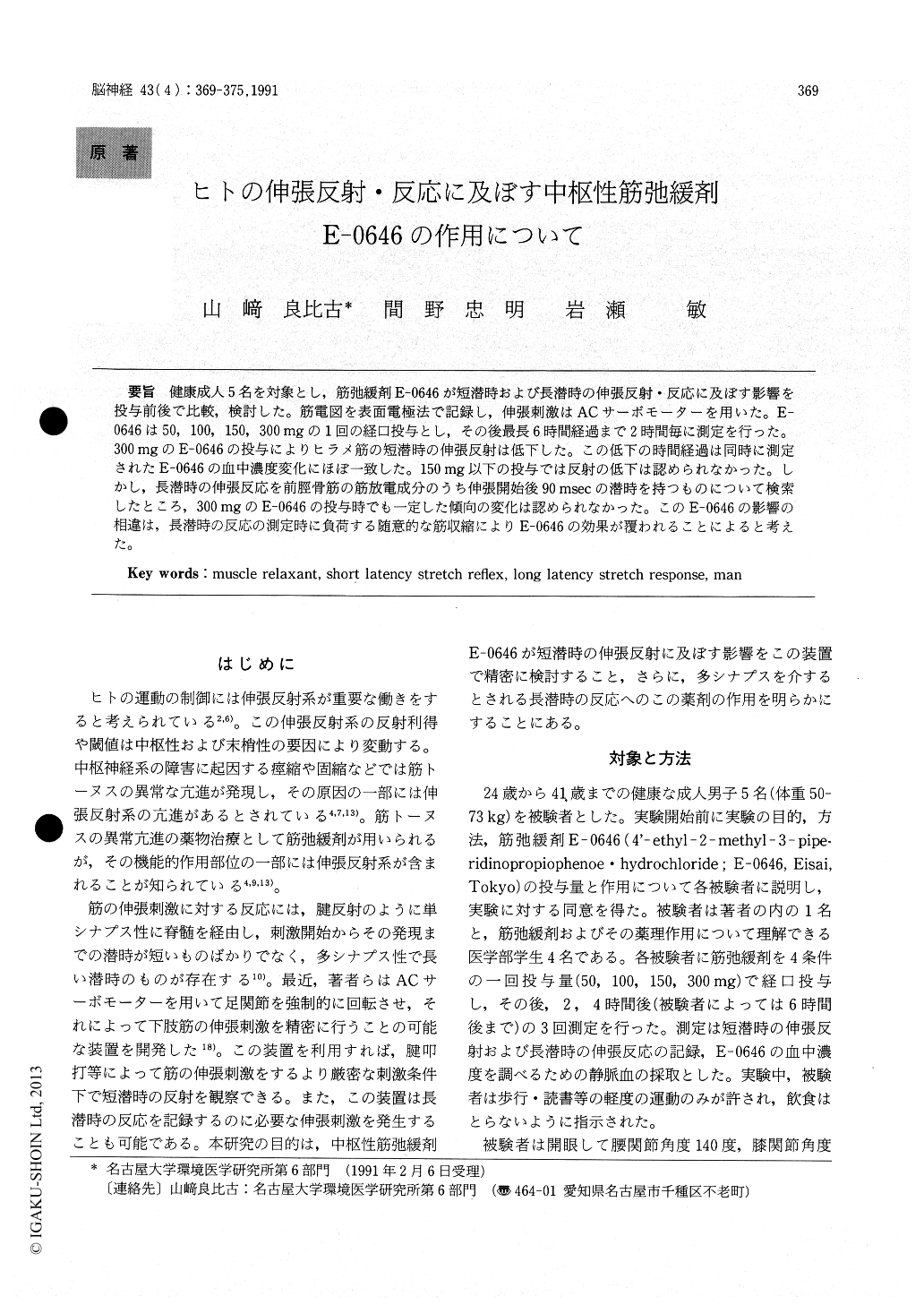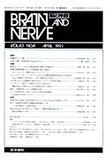Japanese
English
- 有料閲覧
- Abstract 文献概要
- 1ページ目 Look Inside
健康成人5名を対象とし,筋弛緩剤E−0646が短潜時および長潜時の伸張反射・反応に及ぼす影響を投与前後で比較,検討した。筋電図を表面電極法で記録し,伸張刺激はACサーボモーターを用いた。E—0646は50,100,150,300mgの1回の経口投与とし,その後最長6時間経過まで2時間毎に測定を行った。300mgのE−0646の投与によりヒラメ筋の短潜時の伸張反射は低下した。この低下の時間経過は同時に測定されたE−0646の血中濃度変化にほぼ一致した。150mg以下の投与では反射の低下は認められなかった。しかし,長潜時の伸張反応を前脛骨筋の筋放電成分のうち伸張開始後90msecの潜時を持つものについて検索したところ,300mgのE−0646の投与時でも一定した傾向の変化は認められなかった。このE−0646の影響の相違は,長潜時の反応の測定時に負荷する随意的な筋収縮によりE−0646の効果が覆われることによると考えた。
The experiment examined the effects of a muscle relaxant E-0646 on short latency stretch reflex (SLR) and long latency stretch responses (LLRs) of lower leg muscles in 5 healthy male subjects, aged 24-41 years. An AC servomotor produced an ankle rotation of comfortably seated subjects in the direc-tion to stretch the triceps surae muscle for the SLR and the tibialis anterior muscle for the LLRs. Following control measurements, after the oral administration of 50, 100, 150, and 300 mg of E-0646, the SLR and LLRs were recorded every 2 hours for 4 or 6 hours with simultaneous blood sampling to measure E-0646 plasma levels. Electromyograms (EMGs) of the soleus and tibialis anterior muscles were recorded with surface electrodes on each muscle belly. A precision potentiometer was used to measure the ankle angle.
The soleus SLR, evoked by a torque pulse (7 msec duration) of one of 5 different amplitudes, decreased 2 hours after the 300 mg administration. A SLR decrease was also found in a simple relationship between the integrated SLR EMG and the angular velocity at 20 msec after the torque onset, in which the slope and intercept of the relationship changed. The plasma E-0646 level roughly correlated with the SLR decrease. No significant change of the SLR was observed when dosage was less than 150 mg.
The LLRs of the tibialis anterior muscle were tested under the instruction "resist when perturbed" during a weak isometric contraction against a con-stant plantar flexion torque. After the 300 mg administration of the relaxant, no consistent change was observed in the LLRs which was integrated on the EMG component with an approximate latency of 90 msec after the stretch onset. There was no correlation between the change in LLRs magnitude and the plasma E-0646 level.
As to the different effects of E-0646 on SLR and LLRs, a voluntary influence, which was necessarily introduced when testing the LLRs, was considered to mask E-0646 effects on LLRs.

Copyright © 1991, Igaku-Shoin Ltd. All rights reserved.


